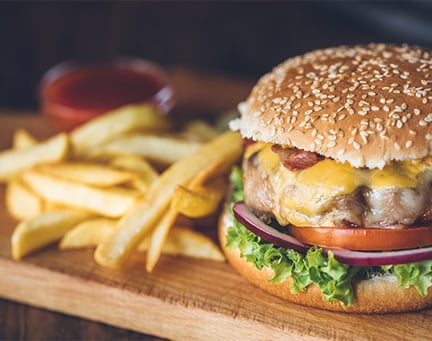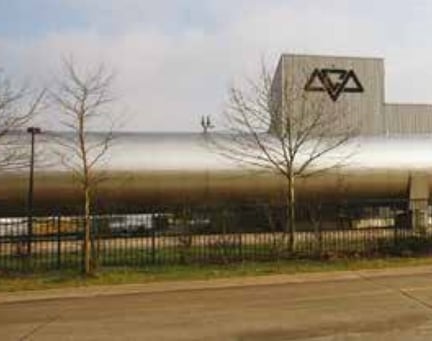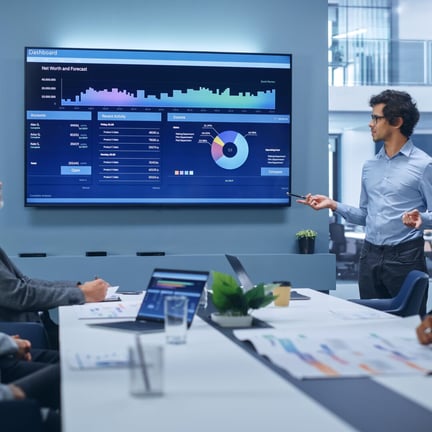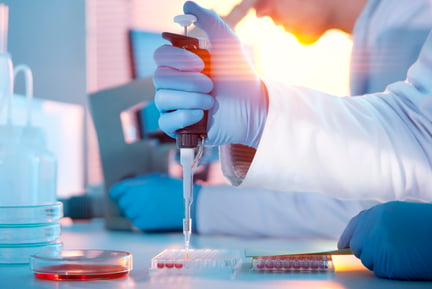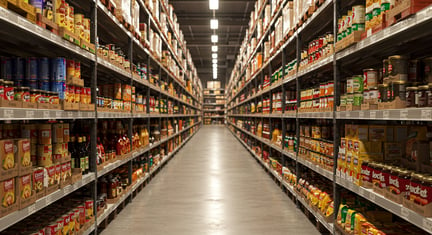With the population set to reach 8.5bn by 2030, food organisations worldwide are exploring new technologies and methods to ensure safe and sustainable supply chains.
To meet changing client requirements, LRQA is at the forefront of not only embracing new technologies to blend conventional assessment with digital monitoring and audit solutions that will enable the delivery of real-time assurance and insight, but also researching alternative food sources to feed the expanding population.
Here, Vincent Doumeizel, LRQA's Vice President Food & Beverage spoke about some of the new technologies and approaches that are disrupting traditional ways of thinking and operating within the food sector and bringing about positive change.
What do you think are the main risks being faced by the food supply chain?
The main risks are related to a lack of resilience and sustainability in primary production; put simply, this means that there is the risk that food supply chains will not be able to provide enough food for the expanding global population.
This fact alone could not only spark strong social tensions across the world, but could result in corruption and spiralling costs for the most simple of food stuffs, meaning that only the wealthy could afford to put food in their mouths.
However, there are many other risks related to food safety and – to an extent – the lack of transparency in the supply chain. To try and put this into context, we have to remember that the food supply chain is very fragmented with billions of operators meaning that the
risk associated with the supply chain is traditionally high.
There is a well-known phrase that we use when talking to our clients serving the food sector and that is that ‘their supply chain is only as strong as their weakest link’ and I for one believe that to be absolutely true.
Through this lack of transparency, there is ultimately a strong risk to completely disconnect people from their food.
So how do we mitigate these risks? Well we look at resilience as a starting point. Resilience implies flexibility and agility. Its implications extend beyond mere process redesign to fundamental decisions on sourcing and the establishment of more collaborative supply chain relationships based on a far greater transparency of information.
New IT tools and platforms mean that collaborative working is becoming possible. Traditionally supply chains have been characterised by arms-length, even adversarial, relationships between the different players with a history of those serving supply chains being unwilling to share information either with suppliers or customers.
However, that is all changing. Technology and data is changing the way we think and operate. In the food industry there is a significant collaboration between manufacturers
and retailers in the form of Collaborative Planning, Forecasting Replenishment and other food safety initiatives, many of which are driven by the notable Consumer Goods Forum
(CGF) through the Global Food Safety Initiative (GFSI) and other programmes.
How can the changing face of assurance underpinned with technology help to address these food supply chain risks?
The underlying principle of collaborative working in the food supply chain is that the exchange of information can reduce uncertainty. Thus a key priority for supply chain risk reduction has to be the creation of a supply chain community to enable the exchange of information.
Assurance is part of that ecosystem and the aim is to create a high level of ‘supply chain intelligence’ whereby there is a greater visibility of upstream and downstream risk profiles.
The Internet of Things (IoT), Machine Learning and Next Generation Sequencing (NGS) will create not only a huge amount of data related to each of every food product that cannot be addressed by a single auditor, but will also drive sustainable supply chains and the safety of our food.
Let’s consider NGS as an example; with its unprecedented throughput, scalability, and speed, NGS enables researchers to study biological systems at a level never before possible.
For example, thanks to NGS, food fraud and adulteration will eventually become a figment of our imaginations as testing will become far more intricate, thereby delivering accurate results to manufacturers that their food products are safe to eat; good news for their brand reputation and more importantly, good news for the consumer.
Assurance will need to reinvent its own concept to operate in this new world. Assurance will be key to secure systems and billions of billions of online transactions as well as the related products and all related data from these new technologies and platform
ecosystems.
In the digital economy, platform ecosystems are nothing less than the foundation for new value creation. They offer unrivalled potential for connectability, scalability and interoperability of existing databases, schemes and systems and also for the
future development and enhancement of assurance services across all industry
sectors – not just food.
This changing face of assurance means that as we move forward, we will see the blending of conventional assessment with digital monitoring and audit solutions that will enable the delivery of real-time assurance and insight, moving from a retrospective focus to predictive insight, from what went wrong to what could go wrong.
We must leverage the tsunami of online data to enable real-time supply chain compliance




